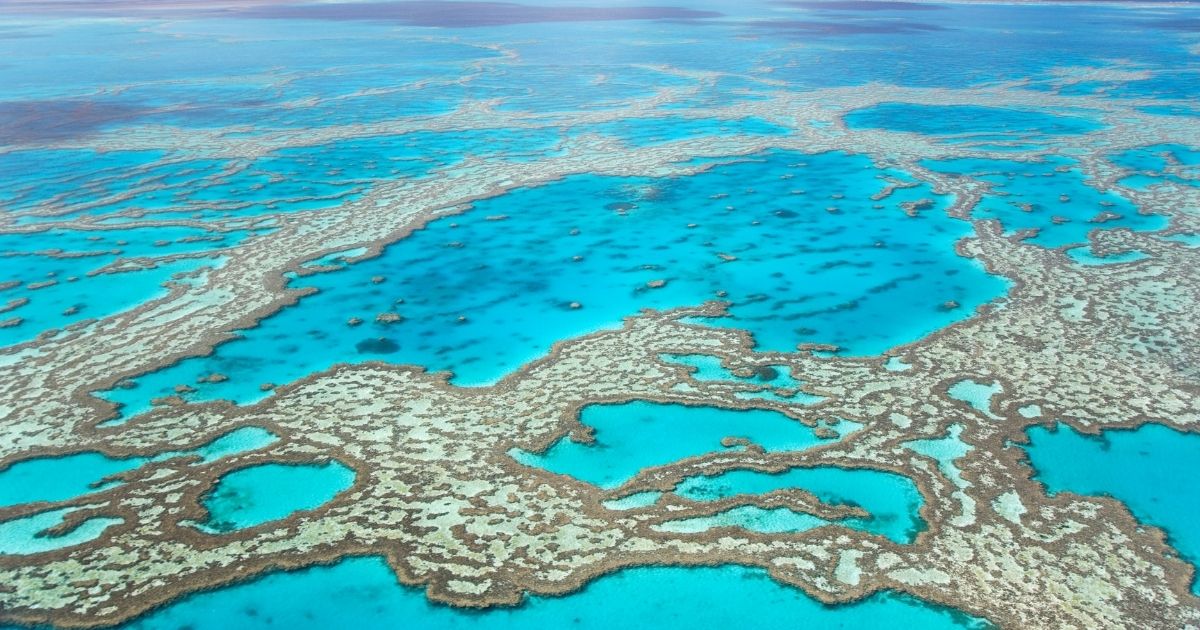Geologic 'glue' thickness is an accurate measure for historic pH levels
Data from fossil reef cores going back 30,000 years show a definitive link between ocean pH levels and thickness of microbialite structures that help stabilise tropical reefs.
The scaffolds that help hold together the world's tropical reefs are at risk from acidification due to increased carbon dioxide in the world's oceans, according to geoscientists at the University of Sydney.
Extensive sampling of the Great Barrier Reef fossil record has shown that the calcified scaffolds that help stabilise and bind its structure become thin and weaker as pH levels fall.
Scientists have seen incidental evidence for this in the past, but a new study led by Zsanett Szilagyi of the Geocoastal Research Group at the University of Sydney has shown that this is a global process, affecting reefs worldwide.
The research is published this week in Marine Geology.
"For the first time we have comprehensively shown that the thickness of this geologic 'reef glue' correlates with changes in ocean pH and dissolved carbon dioxide," said Ms Szilagyi.
The thickness of these crusts can now be regarded as a reliable indicator of ocean acidification going back tens if not hundreds of thousands of years.
"We haven't had such a complete and high-resolution record before. And this geologic study shows that as oceans became more acidic, this is reflected in the thickness of these reef crusts," said Associate Professor Jody Webster from the School of Geosciences, who coordinated the study.
What Are Microbialites?
The 'reef glue' is made up of calcified deposits from microbes that live within reef formations around the world. Known as microbialites, these structures play an important role in many types of aquatic systems and are probably best known from the ancient stromatolites that are built by cyanobacteria in Western Australia, which are billions of years old.
In some types of reef systems, including the Great Barrier Reef, microbialite crusts likely formed by sulfate-reducing bacteria stabilise and bind the reef framework, forming a robust scaffold that can be used by corals and other reef builders to colonise and grow.
In the past these crusts have been more abundant than the corals and algae that grow on and around them and they display variations in thickness over time, while still performing their structural role.
"This means they are really good indicators of changes in environmental conditions of our oceans," Associate Professor Webster said.
The study found a variation in thickness from 11.5 centimetres 22,500 years ago to about 3 centimetres in younger Great Barrier Reef sections, about 12,000 years ago.
When combined with studies from 17 reef systems worldwide, the data shows this thinning of the microbialite crusts coincides with pH dropping below 8.2 right up to modern times.
Global Results
The researchers gathered a dataset of microbial crusts from the Great Barrier Reef as far back as 30,000 years. They compared a comprehensive three-dimensional analysis of samples to two-dimensional scans of the crust thickness.
The results from the Great Barrier Reef show that the two-dimensional analysis of crust thickness provides an accurate proxy for the more detailed three-dimensional method. Compiling 2D sample data from across the world, the scientific team built a global model of microbialite thickness through time.
The study found that the 2D technique gave results within 10 percent of the 3D analysis.
"A real breakthrough here is that we are confident we can now apply a 2D analysis to reefs and obtain reliable information about the history of microbialite formations. This will give us substantial savings in time and resources," Associate Professor Webster said.
"Previous studies have given us glimpses as to how these microbial crusts respond to changes in their environment. What is new in our study is that we measured more than 700 well-dated microbialite samples from the International Ocean Discovery Program on the Great Barrier Reef and combined this with a meta-analysis of 17 other reef records from around the world," he said.
"This allowed us to assess global-scale changes in microbialite development over the past 30,000 years. And, frankly, the findings are a stark warning sign for the dangers of rapid acidification of oceans."
The study argues that in the present-day context of rapid global climate change, changes in dissolved carbon dioxide, pH and temperature, could lead to reduced microbial crust formation, thereby weakening reef frameworks in the future.
By University of Sydney
Journal Reference:
Zs. Szilagyi, Jody M. Webster, Madhavi A. Patterson, Kinga Hips, Robert Riding, Matthew Foley, Marc Humblet, Yusuke Yokoyama, Liyuan Liang, Eberhard Gischler, Lucien Montaggioni, Douglas Gherardi, Juan C. Braga. Controls on the spatio-temporal distribution of microbialite crusts on the Great Barrier Reef over the past 30,000 years. Marine Geology, 2020; 429: 106312 DOI: 10.1016/j.margeo.2020.106312
The research was a global effort, with contributions from Eötvös Loránd University in Hungary, University of Tennessee in the US, Nagoya University and University of Tokyo in Japan, Goethe University in Germany, Aix-Marseille University in France, National Institute for Space Research in Brazil and the University of Granada in Spain.
Core drilling on the Great Barrier Reef took place as part of the International Ocean Discovery Program Expedition 325. We acknowledge the facilities and the scientific and technical assistance of the Australian Microscopy & Microanalysis Research Facility at the Australian Centre for Microscopy & Microanalysis at the University of Sydney. Financial support for this research was provided by the Australian Research Council; the Australia-New Zealand IODP Consortium; and Tempus Közalapítvány.



